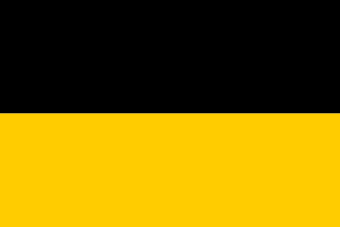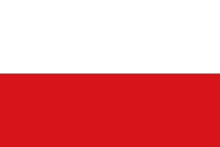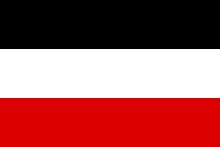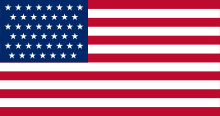1908 Summer Olympics
 | |||
| Host city | London, United Kingdom | ||
|---|---|---|---|
| Nations participating | 22 | ||
| Athletes participating |
2,008 (1,971 men, 37 women)[1] | ||
| Events | 110 in 22 sports | ||
| Opening ceremony | April 27 | ||
| Closing ceremony | October 31 | ||
| Officially opened by | King Edward VII | ||
| Stadium | White City Stadium | ||
| Summer: | |||
| |||
The 1908 Summer Olympics, officially the Games of the IV Olympiad, were an international multi-sport event which was held in 1908 in London, England from 27 April to 31 October 1908. These games were originally scheduled to be held in Rome, but were re-located on financial grounds following a disastrous eruption of Mount Vesuvius in 1906. They were the fourth chronological modern Olympic Games in keeping with the now-accepted four-year cycle as opposed to the proposed Intercalated Games alternate four-year cycle. The IOC president for these Games was Baron Pierre de Coubertin. Lasting a total of 187 days, or 6 months and 4 days, these games were the longest in modern Olympics history.
Background
The selection process for the 1908 Summer Olympics consisted of four bids, and saw Rome selected ahead of London, Berlin and Milan. The selection was made at the 6th IOC Session in London in 1904.[2]
Italian authorities were preparing to hold the games when Mount Vesuvius erupted on 7 April 1906, devastating the city of Naples. Funds were diverted to the reconstruction of Naples, so a new venue was required. London was selected for the first time to hold the Games which were held at White City alongside the Franco-British Exhibition, at the time the more noteworthy event.
The White City Stadium, built in short time for the games, held 68,000 and was considered by some a technological marvel. The stadium track was three laps to the mile (536 metres), not the current standard of 400 metres, with a pool for swimming and diving and platforms for wrestling and gymnastics in the middle.[3]
The distance from the start of the Marathon to the finish at the stadium was established at these games. The original distance of 25 miles was changed to 26 miles so the marathon could start at Windsor Castle and then changed again at the request of Princess Mary so the start would be beneath the windows of the Royal Nursery.[4] To ensure that the race would finish in front of the King, the finish line was moved by British officials who, in response to shot putter and American flag carrier Ralph Rose's refusal to dip the American flag before the Royal Box during the opening ceremony, “felt compelled to restore the importance of the monarchy.” As a result of these changes, the marathon covered a distance of 26 miles 385 yards (42.195 km), which became the standard length starting with the 1924 Summer Olympics.[5]
The Games
The games were surrounded by controversy. On the opening day, following the practice introduced at the Intercalated Games of 1906, teams paraded behind national flags. However, the arrangement caused complications:
- Since Finland was part of the Russian Empire, members of the Finnish team were expected to march under the Russian rather than Finnish flag, so many chose to march without a flag at all.
- The Swedish flag had not been displayed above the stadium, so the members of the Swedish team decided not to take part in the ceremony.
American refusal of flag dipping
The flag of the United States had also not been displayed above the stadium before the opening. The United States' flag bearer, Ralph Rose, refused to dip the flag to King-Emperor Edward VII in the royal box. However, the flag was later dipped in the collective greeting of the royal family. Martin Sheridan, Irish American Athletic Club member and American team captain, is apocryphally believed to have supported Rose by explaining "This flag dips to no earthly king." It is claimed that his statement exemplified both American and Irish defiance of the British monarchy. However, research has shown that this quotation by Sheridan was first reported in 1952, some 24 years after his death.[6][7]
Events
The 1908 Olympics also prompted establishment of standard rules for sports, and selection of judges from different countries rather than just the host. One reason was the 400 meter race, in which a US runner was accused of interfering with a British runner. Part of the problem was the different definition of interference under British and US rules. The race was re-run, but the Americans refused to participate. The British runner, Wyndham Halswelle, won by running around the track on his own, because three of the four original runners had been American, the only walkover in Olympic history.




The most famous incident of the games came at the end of the marathon. The first to enter the stadium, Dorando Pietri of Italy, collapsed several times and ran the wrong way. Not far from the finish-line, two of the officials, Jack Andrew, the clerk of the course and Dr Michael Bulger of the Irish Amateur Athletic Association and the chief medical officer that day, went to his aid. Pietri eventually crossed the line in first place, but the runner-up, American Johnny Hayes of the Irish American Athletic Club protested, leading to Pietri's disqualification. Since he had not been responsible for his disqualification, Queen Alexandra awarded him a gilded silver cup the next day.
These Games were the first to include winter events, as had originally been proposed for the Games. There were four figure skating events, although held on October 28 and 29, months after the other events.
Oscar Swahn from Sweden, who won the gold medal for running deer shooting, became the oldest Olympic champion of all time, and set another age record by being 72 years and 279 days old during his triumph at the 1920 Summer Olympics in Antwerp, Belgium. One of the more unusual shooting events in 1908 was dueling. The discipline, which was an associate event (i.e. not official), was performed by facing opponents wearing protective clothing and masks and firing wax bullets.[8]
American John Taylor was a member of the winning medley relay team, making him the first African-American athlete to win an Olympic gold medal.[9] Times for the winning team were United States (3:29.4): William Hamilton-200 metres (22.0), Nathaniel Cartmell-200 metres (22.2), John Taylor-400 metres (49.8), and Melvin Sheppard-800 metres (1:55.4).[10]
Tragically, Taylor "died on December 2, 1908, after his return to the United States, much regretted by all who met him [there]."[10]
The budget of the organising committee showed a cost of £15,000; over one-third was labeled "entertainment expense". Donations were the major source of revenue; only 28% of income derived from ticket sales. Total receipts of £21,377 resulted in organisers claiming a profit. Construction of the White City Stadium, which cost the government about £60,000, was not counted.[11]
Sports
22 sports, representing 110 events in 24 sporting disciplines, were contested. Swimming, diving and water polo are considered three disciplines of the same sport, aquatics. At the time, tug-of-war was part of athletics and the two different football codes (association and rugby (union)) were listed together. The International Olympic Committee now considers tug-of-war a separate sport, as well as referring to association football as simply "football" and to rugby union as "rugby".[12] In one of seven Cycling events (Cycling sprint) no medals were awarded. The Sailing program was open for a total of five sailing classes, but actually only four Sailing events were contested. The number of events in each discipline is noted in parentheses.
- Aquatics
 Diving (2)
Diving (2)  Swimming (6)
Swimming (6)  Water polo (1)
Water polo (1)
 Archery (3)
Archery (3)  Athletics (26)
Athletics (26)  Boxing (5)
Boxing (5) _pictogram.svg.png) Cycling (7)
Cycling (7)  Fencing (4)
Fencing (4)  Figure skating (4)
Figure skating (4)  Football (1)
Football (1) _pictogram.svg.png) Gymnastics (2)
Gymnastics (2)  Field hockey (1)
Field hockey (1)  Jeu de paume (1)
Jeu de paume (1)  Lacrosse (1)
Lacrosse (1)  Polo (1)
Polo (1)  Rackets (2)
Rackets (2)  Rowing (4)
Rowing (4)  Rugby (1)
Rugby (1)  Sailing (4)
Sailing (4)  Shooting (15)
Shooting (15)  Tennis (6)
Tennis (6)  Tug of war (1)
Tug of war (1)  Water motorsports (3)
Water motorsports (3)  Wrestling
Wrestling
- Wrestling Freestyle (5)
- Wrestling Greco-Roman (4)
Venues
Twelve sports venues were used for the 1908 Summer Olympics. The first winter sports took place at Prince's Skating Club. White City Stadium served as a precursor to modern stadiums. The figure skating events did not take place at the next Olympics in Stockholm, but returned for the 1920 Games in Antwerp. They served as the precursor for the first Winter Olympics that took place in Chamonix sixteen years later. White City served as the main venue for the 1934 British Empire Games (Commonwealth Games since 1978) and a venue for the 1966 FIFA World Cup before its demolition in 1985. The All England Tennis and Lawn Club continues to serve as host for Wimbledon's tennis events and is the only venue of the 1908 Games to serve as one for the 2012 Summer Olympics.[13]
Bisley and Henley served as venues in the 1948 Games when the Olympics returned to London forty years later.[14]
| Venue | Sports | Capacity | Ref. |
|---|---|---|---|
| All England Lawn Tennis and Croquet Club | Tennis | Not listed | [15] |
| Bisley Ranges | Shooting (pistol/rifle) | Not listed | [16] |
| Franco-British Exhibition Fencing Grounds | Fencing | Not listed | [17] |
| Henley Royal Regatta | Rowing | Not listed | [18] |
| Hunters Quay, River Clyde | Sailing | Not listed | [19] |
| Hurlingham Club | Polo | Not listed | [20] |
| Northampton Institute | Boxing | Not listed | [21] |
| Prince's Skating Club | Figure skating | Not listed | [22] |
| Queen's Club | Jeu de paume, Rackets | Not listed | [23][24] |
| Solent | Sailing | Not listed | [25] |
| Southampton Water | Water motorsports | Not listed | [26] |
| Uxendon Shooting School Club | Shooting (shotgun) | Not listed | [27] |
| White City Stadium | Archery, Athletics, Cycling (track), Diving, Field hockey, Football, Gymnastics, Lacrosse, Rugby union, Swimming, Tug of war, Water polo (final), Wrestling | 68,000 | [28] |
Participating nations


The 1908 Games featured athletes representing 22 National Olympic Committees. Finland, Turkey and New Zealand (as part of the team from Australasia) made their first appearance at the Olympic Games. The fact that the United Kingdom competed as a single team was upsetting to some Irish competitors, who felt that Ireland should compete on its own, despite being part of the UK at the time. Fearing an Irish boycott, the authorities changed the name of the team to Great Britain/Ireland, and in two sports, field hockey and polo, Ireland participated as a separate country, winning silver medals in both.[29] Irish athletes in the United States were not affected by this controversy, and many Irish born athletes competed for the U.S. Olympic team as members of the Irish American Athletic Club. Members of the Irish American Athletic Club won ten of the U.S. Olympic team's total 23 gold medals, or as many as the nations of France, Germany and Italy combined.
-
 Argentina (1)
Argentina (1) -
 Australasia (32)[30]
Australasia (32)[30] -
 Austria
Austria -
.svg.png) Belgium (88)
Belgium (88) -
 Bohemia
Bohemia -
 Canada (87)
Canada (87) -
 Denmark (81)
Denmark (81) -
 Finland (67)[31]
Finland (67)[31] -
 France (363)
France (363) -
 Germany (81)
Germany (81) -
 Great Britain (676)
Great Britain (676) -
.svg.png) Greece (20)
Greece (20) -
.svg.png) Hungary (63)
Hungary (63) -
.svg.png) Italy (68)
Italy (68) -
 Netherlands[32]
Netherlands[32] -
 Norway (69)
Norway (69) -
 Russian Empire (6)
Russian Empire (6) -
 South Africa
South Africa -
 Sweden
Sweden -
 Switzerland
Switzerland -
 United States (122)
United States (122)
Disputed
Medal count

These are the top ten nations that won medals at the 1908 Games.
| Rank | Nation | Gold | Silver | Bronze | Total |
|---|---|---|---|---|---|
| 1 | | 56 | 51 | 39 | 146 |
| 2 | | 23 | 12 | 12 | 47 |
| 3 | | 8 | 6 | 11 | 25 |
| 4 | | 5 | 5 | 9 | 19 |
| 5 | | 3 | 5 | 5 | 13 |
| 6 | | 3 | 4 | 2 | 9 |
| 7 | | 3 | 3 | 10 | 16 |
| 8 | | 2 | 3 | 3 | 8 |
| 9 | | 2 | 2 | 0 | 4 |
| 10 | | 1 | 5 | 2 | 8 |
See also
- Summer Olympic Games
- Olympic Games
- International Olympic Committee
- List of IOC country codes
- 1948 Summer Olympics and 2012 Summer Olympics - which were also held in London.
- History of Shepherd's Bush
Notes
- ↑ "The Olympic Summer Games Factsheet" (PDF). International Olympic Committee. Retrieved 5 August 2012.
- ↑ "Past Olympic host city election results". GamesBids. Archived from the original on 17 March 2011. Retrieved 17 March 2011.
- ↑ Bill Mallon, Ian Buchanan. The 1908 Olympic Games: Results for All Competitors in All Events, p. 5.
- ↑ CBC Sports. "First appearance for flags at Olympic opening ceremony". CBC News. Archived from the original on 3 June 2008. Retrieved 2008-06-30.
- ↑ Rhonda Jolly (3 June 2008). The modern Olympics: an overview at the Wayback Machine (archived March 18, 2009). Department of Parliamentary Services. p. 9
- ↑ Bill Mallon and Ian Buchanan (1999). "To No Earthly King ..." (PDF). Journal of Olympic History: 21.
- ↑ London Olympics 1908 & 1948 at the Wayback Machine (archived October 10, 2006). BBC (2005-06-24).
- ↑ The Sketch: A Journal of Art and Actuality (No. 808 Vol LXIII, Sixpence ed.). Ingram brothers. 1908-07-22. p. 41.
- ↑ John Baxter Taylor (1882–1908), V.M.D. 1908 – First African-American to Win an Olympic Gold Medal at the Wayback Machine (archived February 4, 2008), University of Pennsylvania Archives.
- 1 2 Official Olympic Reports. LA84 Foundation. Retrieved on 2012-07-09.
- ↑ Zarnowski, C. Frank (Summer 1992). "A Look at Olympic Costs" (PDF). Citius, Altius, Fortius. 1 (1): 16–32. Retrieved 2007-03-24.
- ↑ Olympic Sports of the Past. Olympic.org. Retrieved on 2012-07-09.
- ↑ London2012.com profile. (Listed as Wimbledon) - accessed 29 September 2010.
- ↑ 1948 Summer Olympics official report. pp. 43, 47-9. Accessed 19 October 2010
- ↑ 1908 Summer Olympics official report. p. 209. Accessed 5 October 2010.
- ↑ 1908 Summer Olympics official report. p. 254. Accessed 5 October 2010.
- ↑ 1908 Summer Olympics official report. p. 127. Accessed 5 October 2010.
- ↑ 1908 Summer Olympics official report. p. 237. Accessed 5 October 2010.
- ↑ 1908 Summer Olympics official report. p. 340. Accessed 4 July 2015.
- ↑ 1908 Summer Olympics official report. p. 232. Accessed 5 October 2010.
- ↑ 1908 Summer Olympics official report. pp. 107, 296-313. Accessed 5 October 2010.
- ↑ 1908 Summer Olympics official report. p. 284. Accessed 5 October 2010.
- ↑ 1908 Summer Olympics official report. p. 314. Accessed 5 October 2010.
- ↑ 1908 Summer Olympics official report. p. 233. Accessed 8 July 2012.
- ↑ 1908 Summer Olympics official report. p. 339. Accessed 5 October 2010.
- ↑ 1908 Summer Olympics official report. p. 351. Accessed 5 October 2010.
- ↑ 1908 Summer Olympics official report. p. 39. Accessed 5 October 2010.
- ↑ 1908 Summer Olympics official report. pp. 32-5, 40. Accessed 5 October 2010.
- ↑ Irish Times, 4 August 2008, article by Kevin Mallon
- ↑ Australasia included Australia and New Zealand.
- ↑ The Grand Duchy of Finland was part of the Russian Empire at the time, but was treated as a separate nation.
- ↑ The Netherlands was typically referred to in early Olympic competition as "Holland," though the entire nation of the Netherlands was the entity in question, rather than the region of the country formally named Holland; the IOC now refers to the nation as the "Netherlands".
- ↑ At the 1908 Olympics, the name "Turkey" was used to refer to the Ottoman Empire. One Turkish gymnast was included on the list of entries but no evidence exists that he actually competed.
External links
| Wikimedia Commons has media related to 1908 Summer Olympics. |
- "London 1908". Olympic.org. International Olympic Committee.
- "Results and Medalists". Olympic.org. International Olympic Committee.
- Cook, Theodore Andrea (May 1909). The Fourth Olympiad London 1908 Official Report (PDF). London: British Olympic Association. Archived (PDF) from the original on 28 May 2008. Retrieved 2008-05-08.
- Mallon, Bill; Buchanan, Ian (2000). "Background" (PDF). The 1908 Olympic Games: Results for All Competitors in All Events, with Commentary. McFarland. ISBN 978-0-7864-0598-5. Retrieved 2008-05-08.
- Jenkins, Rebecca (2008). The First London Olympics: 1908. Piatkus Books. ISBN 978-0-7499-5168-9.
- Video footage of the 1908 Summer Olympics
- White City Stadium/BBC radio
- The London Olympics by Russell James
| Preceded by St. Louis |
Summer Olympic Games London IV Olympiad (1908) |
Succeeded by Stockholm |
51°30′49″N 0°13′39″W / 51.51362°N 0.22740°WCoordinates: 51°30′49″N 0°13′39″W / 51.51362°N 0.22740°W